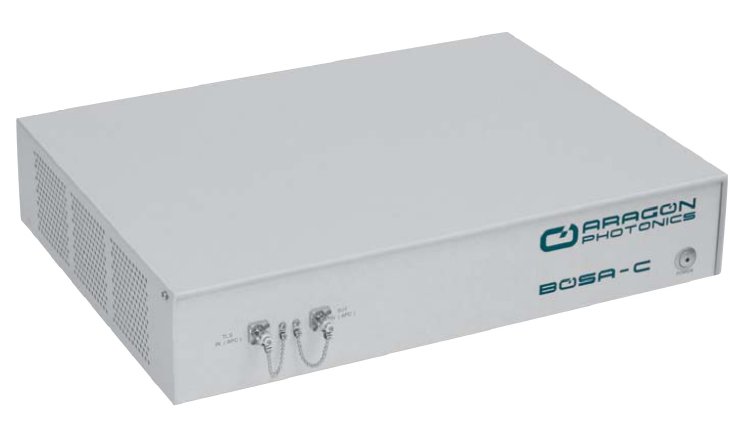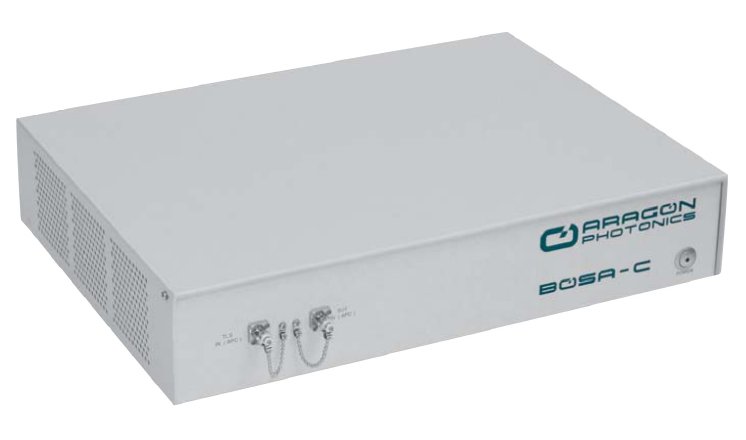The traditional heterodyne and interferometric methods for high resolution optical spectrum analysis are based on optically combining a tunable laser (TLS) signal with the signal-under-test (SUT) and electrically processing the photodetected spectrum. There is a trade-off among the attributes of resolution, dynamic range and wavelength range. In addition, there is an inherent limitation due to the sidemodes of the TLS. These sidemodes become part of the measurement result and are indistinguishable from the characteristics of the SUT. The side-mode suppression ratio (SMSR) of the TLS limits the dynamic range by causing spurious (false) signals.
The BOSA technology, utilizing stimulated Brillouin scattering, relies on a pure optical analysis of the SUT transmitted through a nonlinear medium stimulated by a counter-propagating probe laser (TLS). This process creates the equivalent of an optical filter with 3-dB and 60-dB bandwidths of 0.08 pm and 0.44 pm respectively and is valid for any wavelength span. The counter-propagation provides immunity to TLS sidemodes.
Signals can now be fully characterized down to a level previously hidden under the noise floor using the heterodyne and interferometric methods. The optical spectra of pulsed and modulated signals were also difficult to fully analyze. With the BOSA, the true modulated optical spectrum can now be observed.
Only the really high resolution and real time operation of the BOSA allow measurement of the dynamic transformation of high-frequency modulated light as the signal propagates on optical fibre. This makes of the BOSA the ideal tool for Radio over Fibre analysis.
About Aragon Photonics
The BOSA-C is the highest resolution OSA with 10MHz (0.08pm) hard-spec and simultaneous 80dB of dynamic range. It is indicated for the test of active components and signals and its novel all-optical technology removes the limitations of heterodyne or interferometric methods derived from the side peaks of the local oscillator.



